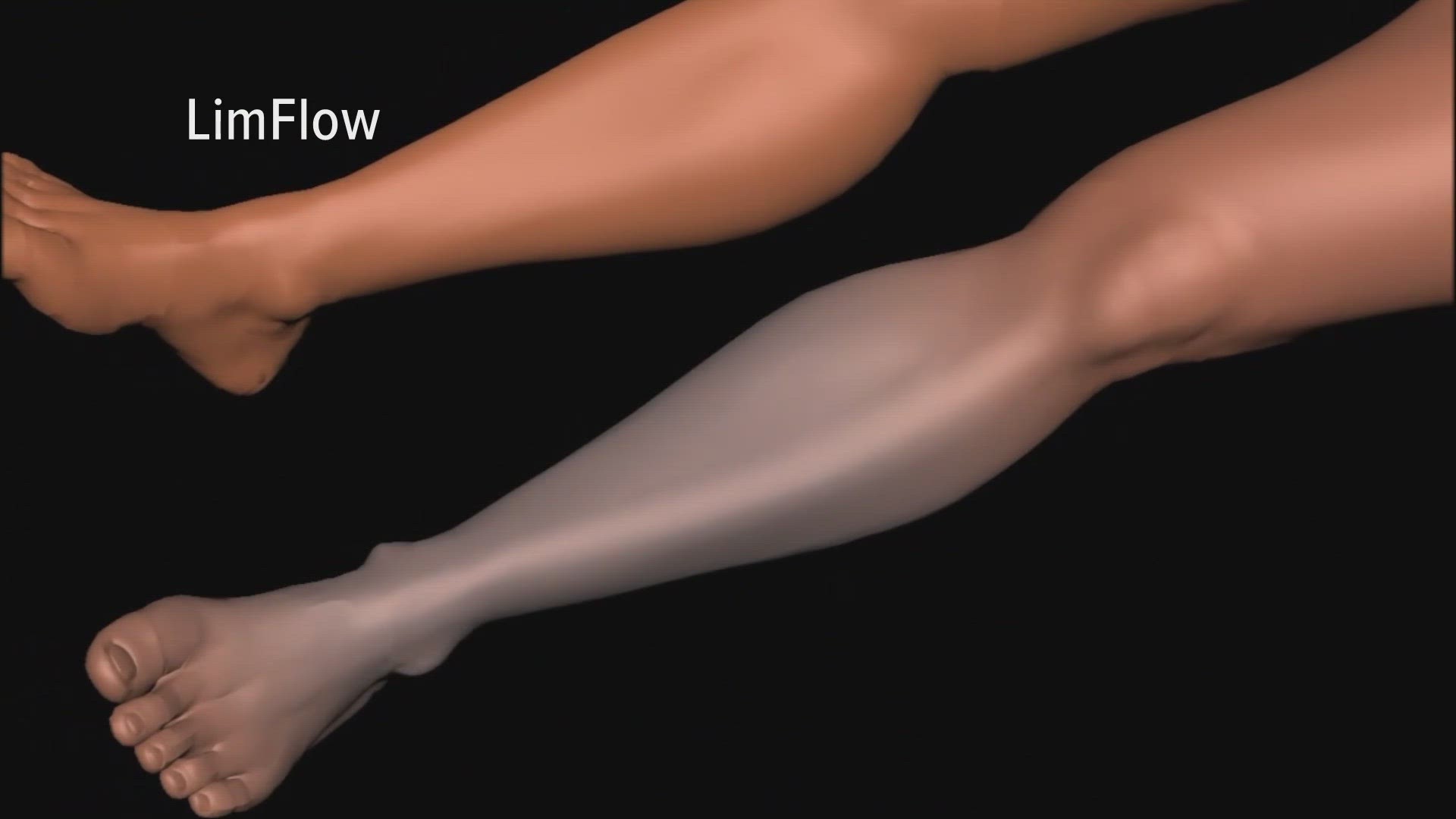CLEVELAND — According to the National Institutes of Health, nearly 400 people a day lose a leg or foot to diabetes, peripheral artery disease or neuropathy. But an experimental procedure, called LimFlow, may not only save limbs, but also lives.
Eight years ago, Cindy Elford lost her left leg due to a wound that wouldn't heal. Two years later, she faced losing the other for the same reason.
“I can't imagine not having both legs, it's bad enough not having one,” Cindy said.
Cindy told us that six years ago, just hours after becoming the first patient at University Hospitals Cleveland Medical Center to try the revolutionary experimental procedure.
We caught up with her Thursday to see how she’s been doing.
“It changed my life, otherwise I would have been in a wheelchair,” she said.
While bypass, stents and balloons are often used to save limbs, they weren't an option for Cindy.
"20 to 30 percent of the time, we were telling patients, 'Sorry, there's nothing more we can do. You need an amputation,'" UH CLE Medical Center interventional cardiologist Dr. Mehdi Shishehbor said.
LimFlow became the last option for patients who qualified for the study. It works sort of like a stent.
"We take the blood, we divert the blood from the blocked arteries in the lower leg and we turn the veins into an artery," Shishehbor explained.
In the last six years, Cindy has walked through life on her own.
"I can get around on my own a lot easier, I think this is a lifesaver for a lot of people," she said.
Shishehbor says the FDA will decide in May whether to approve LimFlow. Currently, it's only available at 20 centers across the nation who are participating in the study.
On Thursday, the study findings were published in The New England Journal Of Medicine.
"We were technically successful 99% of the time," Shishehbor said, meaning the procedure itself was successful.
Here are more details from the study:
RESULTS
"We enrolled 105 patients who had chronic limb-threatening ischemia and were of a median age of 70 years (interquartile range, 38 to 89). Of the patients enrolled, 33 (31.4%) were women and 45 (42.8%) were Black, Hispanic, or Latino. Transcatheter arterialization of the deep veins was performed successfully in 104 patients (99.0%). At 6 months, 66.1% of the patients had amputation-free survival. According to Bayesian analysis, the posterior probability that amputation-free survival a 6 months exceeded a performance goal of 54% was 0.993, which exceeded the prespecified threshold of 0.977. Limb salvage (avoidance of above-ankle amputation) was attained in 67 patients (76.0% by Kaplan–Meier analysis). Wounds were completely healed in 16 of 63 patients (25%) and were in the process of healing in 32 of 63 patients (51%). No unanticipated device-related adverse events were reported."
CONCLUSIONS
"We found that transcatheter arterialization of the deep veins was safe and could be performed successfully in patients with chronic limb-threatening ischemia and no conventional surgical or endovascular revascularization treatment options. (Funded by LimFlow; PROMISE II study ClinicalTrials.gov number, NCT03970538.)"

